Imagine this: You’re knee-deep in a project, and suddenly, you’re faced with a maze of complex rules. Sound familiar? Navigating the ever-changing landscape of industry standards can feel like an uphill battle. But here’s the thing—it doesn’t have to be that way.
Understanding these rules isn’t just about avoiding fines or legal issues. It’s about ensuring safety, improving efficiency, and delivering top-notch results. That’s where this guide comes in. We’ve broken down the essentials into plain language, so you can focus on what you do best—getting the job done right.
From aligning with the latest codes to optimizing your system’s performance, we’ve got you covered. Let’s make compliance less daunting and more empowering.
Key Takeaways
- Navigating industry standards doesn’t have to be overwhelming.
- Proper alignment with codes ensures safety and efficiency.
- This guide simplifies complex rules for easy understanding.
- Staying updated helps avoid legal and operational challenges.
- Optimizing your system leads to better performance and results.
Understanding HVAC Regulatory Compliance
Let’s face it—keeping up with industry rules can feel like a never-ending task. But here’s the good news: it doesn’t have to be overwhelming. When you understand what compliance means for your business, you’re not just avoiding fines—you’re building a reputation for safety and quality.
What Compliance Means for Your Business
Compliance is more than just following rules. It’s about ensuring your operations meet the highest standards of safety and efficiency. By adhering to industry requirements, you protect your team, your customers, and your bottom line. Think of it as a way to show your commitment to quality and reliability.
For example, proper handling of refrigerants isn’t just a legal requirement—it’s a matter of health and environmental responsibility. Similarly, ensuring proper ventilation helps maintain indoor air quality, which directly impacts the well-being of everyone in the building.
Key Regulatory Bodies and Industry Standards
Several organizations play a crucial role in shaping the rules you need to follow. ASHRAE, for instance, sets standards for system design and air quality. The NFPA focuses on fire safety, reducing risks associated with installations and maintenance.
Certifications like NATE also matter. They signal to your clients and peers that you’ve met rigorous certification requirements. This not only builds trust but also ensures your team is equipped with the latest knowledge and skills.
By staying aligned with these standards, you’re not just meeting requirements—you’re setting your business up for long-term success. After all, compliance isn’t just about rules—it’s about delivering results that matter.
HVAC Regulatory Compliance Guide
Ever felt like navigating industry rules is like trying to solve a puzzle without the picture? You’re not alone. The good news is, there’s a clear path forward. This guide is designed to simplify the process, breaking down complex codes into actionable steps.
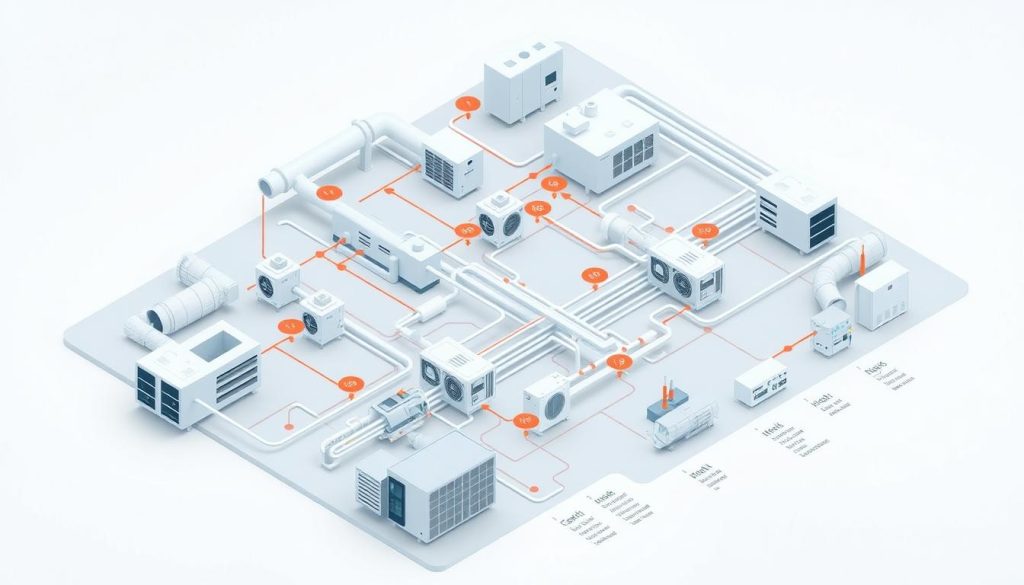
At every level, from installation to maintenance, understanding the rules ensures your system operates safely and efficiently. Let’s start with heating. Properly calibrated systems not only keep spaces warm but also reduce energy waste. For example, adjusting thermostat settings or upgrading to smart controls can make a big difference.
Next, focus on energy efficiency. Small changes, like sealing ducts or using high-efficiency filters, can lower utility bills and extend the life of your system. These adjustments also align with industry standards, ensuring you stay compliant while saving money.
Finally, consider the bigger picture. Regular inspections and maintenance keep your system running smoothly. By following this roadmap, you’ll not only meet requirements but also achieve optimum performance. It’s about making compliance work for you, not the other way around.
Exploring HVAC Codes and Standards
Ever wondered why some rules are strict while others are just suggestions? Understanding the difference between codes and standards is key to navigating the rules for systems effectively. Think of it like this: codes are the law, while standards are the best practices recommended by experts.
Distinguishing Between Codes and Standards
Codes are legally binding. They ensure safety and reliability in every installation. For example, the International Building Code (IBC) sets minimum requirements for construction, including system integration. On the other hand, standards like those from ASHRAE are voluntary but highly respected. They focus on efficiency and performance, going beyond basic requirements.
Why does this matter? Following codes keeps you out of legal trouble, while adhering to standards boosts your reputation for quality. It’s like driving: obeying traffic laws keeps you safe, but driving smoothly and courteously makes you a better driver.
Federal, State, and Local Regulations Overview
Rules can vary widely depending on where you are. Federal regulations, like the AIM Act, aim to reduce harmful emissions. States like California have even stricter targets, aiming for a 40% reduction in emissions by 2030. Local building departments may add their own rules, often more stringent than national standards.
For instance, a project in New York might need to meet both federal energy efficiency standards and local fire safety codes. This layered approach ensures safety and quality but requires careful research. Missing a local rule can delay your project or lead to fines.
Proper research is crucial. It ensures your building projects meet all requirements, from safety to indoor air quality. By staying informed, you protect your team, your clients, and your bottom line.
Tips for Adhering to Safety and Quality Requirements
Staying ahead in the industry means more than just following rules—it’s about creating a culture of safety and quality. By focusing on practical steps, you can ensure your operations meet the highest standards while boosting your reputation for reliability.
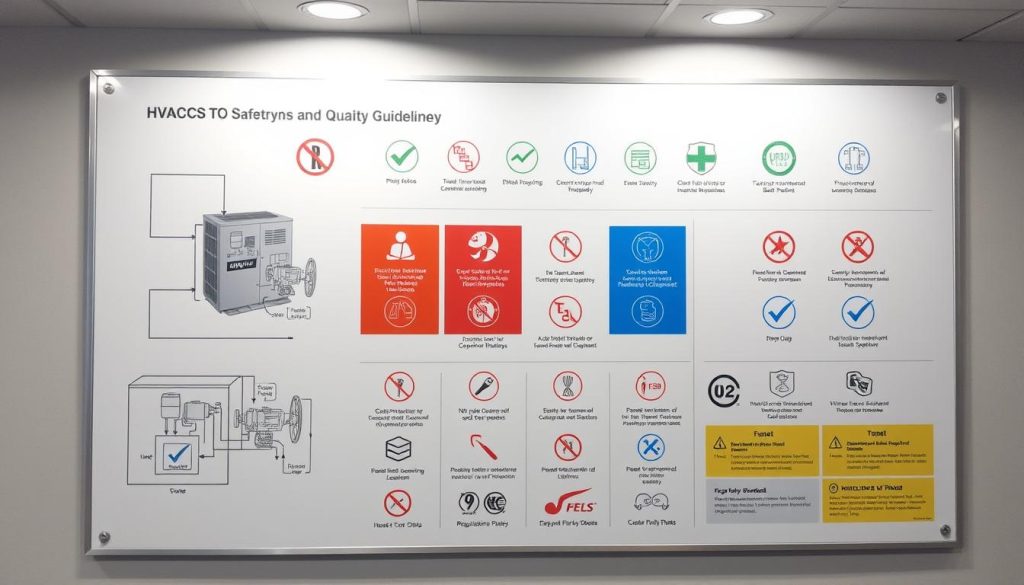
Implementing Safety Protocols in Everyday Practice
Safety should be a top priority in every task. Start by ensuring your team uses proper Personal Protective Equipment (PPE), like gloves, goggles, and respirators. Regular equipment checks and maintenance can prevent accidents before they happen.
For example, always secure pressurized gas cylinders and use lockout/tagout procedures when working on electrical systems. These small steps can make a big difference in preventing injuries and ensuring smooth operations.
Leveraging Certification and Training Opportunities
Investing in training and certifications is a smart move. Programs like NATE ensure your team stays updated on the latest industry practices. This not only improves safety but also enhances your team’s skills and confidence.
Studies show that ongoing education reduces workplace accidents by up to 30%. By prioritizing training, you’re not just meeting guidelines—you’re building a safer, more efficient team.
Here are some actionable tips to get started:
- Conduct regular safety drills to keep your team prepared.
- Use high-efficiency filters to improve energy usage and indoor air quality.
- Organize tools and equipment systematically to reduce errors and save time.
- Stay updated on industry guidelines to ensure compliance and innovation.
By integrating these practices, you’ll not only meet safety and quality requirements but also gain a competitive edge in the industry. It’s about turning rules into opportunities for growth and excellence.
Energy Efficiency and Indoor Air Quality Compliance
Creating a healthy and efficient environment starts with understanding the basics. Balancing energy efficiency and indoor air quality is essential for any business. Not only does it ensure comfort, but it also reduces costs and promotes well-being.
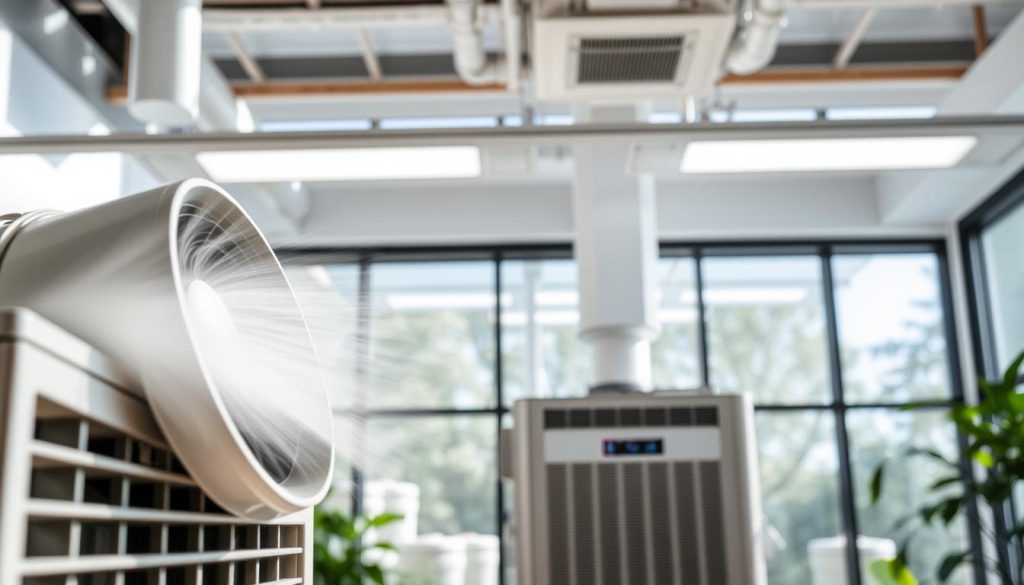
Small changes can make a big difference. For example, using high-efficiency filters improves air quality while lowering energy consumption. Regular maintenance ensures your equipment runs smoothly, preventing unexpected failures.
Best Practices for Optimizing System Performance
Start with proper installation. Ensuring ducts are sealed and systems are calibrated correctly can save energy and improve performance. Upgrading to smart controls allows for better management of temperature and airflow.
Focus on air quality by using MERV 13 filters. These filters capture more particles, ensuring cleaner indoor air. Regular inspections and cleaning of ventilation systems also prevent contaminants from circulating.
Invest in modern equipment. Energy-efficient models not only reduce utility bills but also align with industry standards. For instance, variable speed drives and energy recovery ventilators are excellent choices for improving efficiency.
Finally, prioritize maintenance. Scheduled checks and timely repairs extend the life of your system. This proactive approach ensures consistent performance and avoids costly breakdowns.
By following these steps, you’ll create a healthier, more efficient space. It’s not just about meeting standards—it’s about enhancing the environment for everyone.
Meeting Installation and Maintenance Requirements
Getting installations right from the start can save you time, money, and headaches down the line. Whether you’re setting up a new system or upgrading an existing one, precision is key. Proper installation ensures your air conditioning system runs efficiently, meets state requirements, and delivers optimal performance.
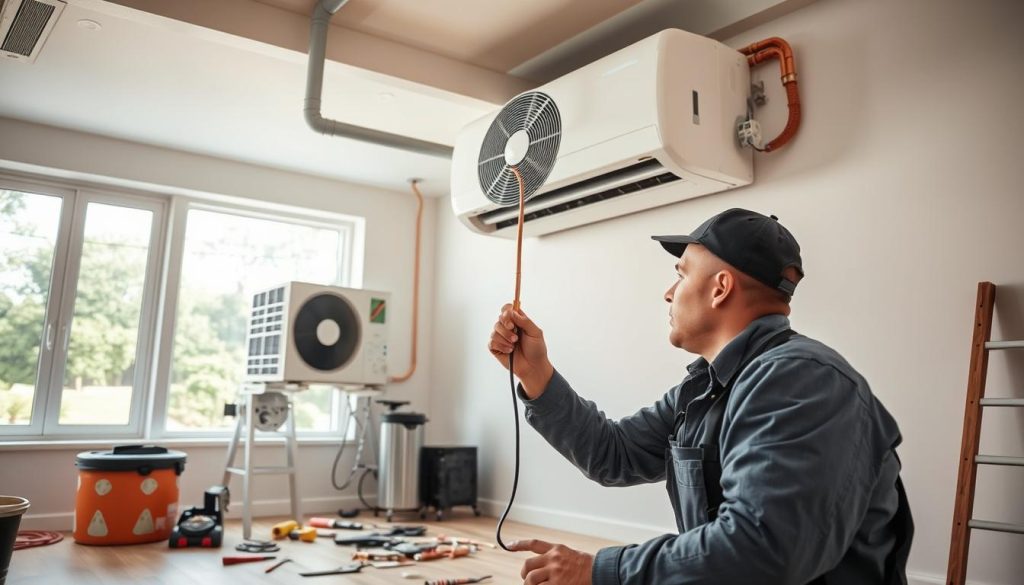
Ensuring Precise HVAC Installations
Precision begins with planning. Start by calculating the building’s heat gain and loss to determine the right system capacity. This avoids overloading or underutilizing your equipment. Proper ductwork design is also crucial. Leaky ducts can waste energy and reduce performance.
Use high-quality materials and follow manufacturer guidelines. For example, sealing ducts with mastic or metal tape ensures airtight connections. This small step can improve efficiency by up to 20%. Always test the system after installation to confirm it meets state codes and delivers the expected performance.
Effective Maintenance and Record-Keeping Strategies
Regular maintenance keeps your system running smoothly. Schedule inspections to catch issues early. For instance, cleaning coils and replacing filters can prevent breakdowns and improve air conditioning efficiency. Keep detailed records of all maintenance activities. This helps track performance and ensures compliance with state regulations.
Use a digital resource to log tasks, inspections, and repairs. This makes it easy to access information when needed. Proper documentation also demonstrates your commitment to quality and safety, which can build trust with clients.
Here are some practical tips to stay on top of maintenance:
- Inspect and clean filters monthly to maintain air quality.
- Check refrigerant levels to ensure optimal performance.
- Use a checklist to cover all essential tasks during inspections.
- Train your team on the latest maintenance techniques and state guidelines.
By focusing on precise installations and proactive maintenance, you’ll enhance your system’s performance and longevity. It’s about using the right resources and strategies to meet requirements while delivering exceptional results.
Emerging Trends in HVAC Regulations and Technology
The future of systems is here, and it’s smarter than ever. With advancements in technology, the way we manage heating and cooling is undergoing a significant transformation. These changes aren’t just about convenience—they’re about creating a more efficient and sustainable environment.
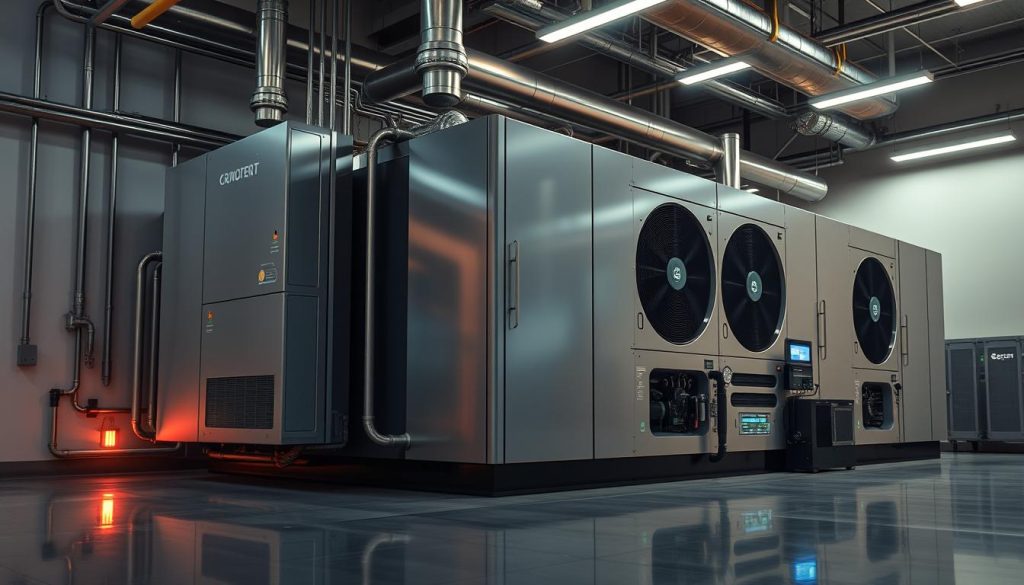
One of the most exciting developments is the rise of smart systems. These systems use IoT (Internet of Things) to monitor and adjust performance in real-time. For example, they can detect when a room is unoccupied and reduce energy usage automatically. This not only saves money but also aligns with evolving hvac regulation standards.
Smart HVAC Systems and IoT Integration
Smart systems are revolutionizing the industry. By integrating IoT, these systems provide data-driven insights that improve efficiency. For instance, real-time monitoring can lead to energy savings of up to 30%. This is a game-changer for businesses looking to reduce costs and meet environmental goals.
Another benefit is predictive maintenance. Using AI, these systems can identify potential issues before they become major problems. This reduces downtime by up to 20% and extends equipment lifespan by an average of 5 years. It’s a win-win for both performance and compliance.
Government programs are also playing a role in driving these changes. Initiatives aimed at reducing emissions and improving energy efficiency are pushing businesses to adopt smarter technologies. For example, the AIM Act focuses on phasing out harmful refrigerants, encouraging the use of low-GWP alternatives.
Experts agree that embracing these changes is essential. Staying updated with the latest trends not only ensures compliance but also positions your business for long-term success. As one expert noted, “The future belongs to those who adapt.”
Here’s how you can stay ahead:
- Invest in smart systems that offer real-time monitoring and adjustments.
- Participate in government programs that promote energy efficiency.
- Train your team on the latest technologies and hvac regulation updates.
- Use predictive maintenance tools to reduce downtime and extend equipment life.
- Stay informed about evolving standards to ensure your systems meet all requirements.
By adopting these strategies, you’ll not only meet current hvac regulations but also prepare for future challenges. The key is to view change as an opportunity to innovate and grow.
Addressing Common Compliance Challenges with Expert Strategies
Navigating the complexities of industry standards can feel like a maze, but with the right strategies, it’s manageable. Whether you’re a seasoned hvac technician or managing a commercial building, staying compliant doesn’t have to be overwhelming. Let’s break down the hurdles and explore practical solutions.
Overcoming Regulatory and Compliance Hurdles
One of the biggest challenges is keeping up with ever-changing rules. For example, OSHA fines for non-compliance can reach up to $136,532 for serious violations. To avoid these penalties, start with a proactive approach. Regular maintenance and proper documentation are key.
Another common issue is workforce shortages. With fewer skilled technicians, meeting deadlines can be tough. Investing in training programs and certifications like NATE can help bridge this gap. Studies show that ongoing education reduces workplace accidents by up to 30%.
Here’s a quick look at common challenges and expert strategies:
| Challenge | Expert Strategy |
|---|---|
| Workforce Shortages | Invest in training and certifications |
| Evolving Standards | Stay updated with industry newsletters and webinars |
| Documentation Gaps | Use digital tools for record-keeping |
| Energy Efficiency | Upgrade to smart systems and high-efficiency filters |
Staying Updated with Industry Changes and Innovations
The industry is constantly evolving, and staying informed is crucial. For instance, the AIM Act focuses on phasing out harmful refrigerants. By adopting low-GWP alternatives, you not only comply but also improve sustainability.
Innovations like IoT integration are game-changers. Smart systems can reduce energy usage by up to 30% and predict maintenance needs before issues arise. This proactive approach saves time and money while ensuring compliance.
Here are some tips to stay ahead:
- Participate in industry events and workshops.
- Subscribe to newsletters from organizations like ASHRAE.
- Invest in technologies that align with current standards.
- Encourage your team to pursue continuous education.
By addressing these challenges head-on, you’ll not only meet requirements but also position yourself as a leader in the field. It’s about turning obstacles into opportunities for growth and success.
Conclusion
Taking control of your system’s performance starts with understanding the rules. By following industry standards, you ensure safety, efficiency, and long-term success. Organizations like the American Society of Heating provide valuable guidelines to help you stay on track.
Implementing best practices, such as regular reviews and proactive measures, keeps your operations competitive. Partnering with a professional ensures you’re meeting all requirements while optimizing performance. This approach not only avoids penalties but also builds trust with clients.
Ready to take the next step? Review your current processes and consult experts to ensure you’re aligned with the latest standards. By staying proactive, you’ll turn challenges into opportunities for growth and excellence.
FAQ
What does compliance mean for my business?
Who sets the standards for heating and cooling systems?
How do codes and standards differ?
Why is energy efficiency important in heating and cooling systems?
What are the best practices for maintaining indoor air quality?
How can I ensure my installations meet compliance requirements?
What are smart HVAC systems, and how do they impact compliance?
How can I stay updated with industry changes?
What challenges might I face with compliance, and how can I overcome them?
Source Links
- HVAC Regulations: Navigating Compliance in Commercial Settings
- HVAC Building Codes: Navigating Regulations for Efficient Construction
- Understanding the Importance of HVAC Regulations and Code Compliance – Aireco
- Mastering HVAC Compliances: A Technician’s Guide – National Technical Institute
- How to Ensure HVAC Regulatory Compliance with Specialized Software
- Introduction to HVAC Regulatory Compliance
- Navigating Regulatory Requirements: A Comprehensive Guide to HVAC Qualification in Life Sciences
- HVAC Compliance and Regulations for Commercial Buildings – Cadence
- Key HVAC Regulations and Requirements for 2025 and Beyond
- ASHRAE Standards for HVAC: Complete Guide – Metalphoto of Cincinnati
- Regulatory Compliance in Commercial HVAC Installation | FRG
- 9 HVAC Safety Hazards Every Tech Should Be Aware Of
- Essential HVAC Safety Tips: A Guide for New Technicians The Best ERP Software for HVAC, Plumbing, and Field Service Businesses
- Energy Code Ace – Building Indoor Air Quality and Ventilation Requirements
- Energy-Efficient Strategies for ASHRAE 90.1 Compliance — Attune – Unified IoT platform getting the real-time data you need
- HVAC Quality Installation Specification (ACCA Standard 5)
- What to Expect from HVAC Industry Regulations in 2025 — Northstar Refrigeration, Inc.
- The Future of HVAC: Emerging Trends and Technologies to Watch
- Compliance And Regulations: Navigating HVAC Standards With Software Support
- The Importance of Safety Compliance for HVAC Technicians
- Decrease Liability: Stay on Top of Building Compliance and Safety Regulations
- 4 Strategies for Ensuring Cleanroom Compliance in 2025 | Nortek Air Solutions
- Regulatory Compliance for HVAC Project Managers
- Who regulates the HVAC industry? – Advanced Cooling
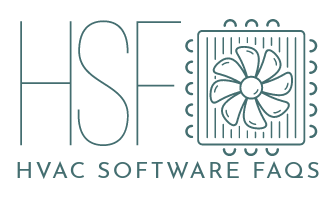
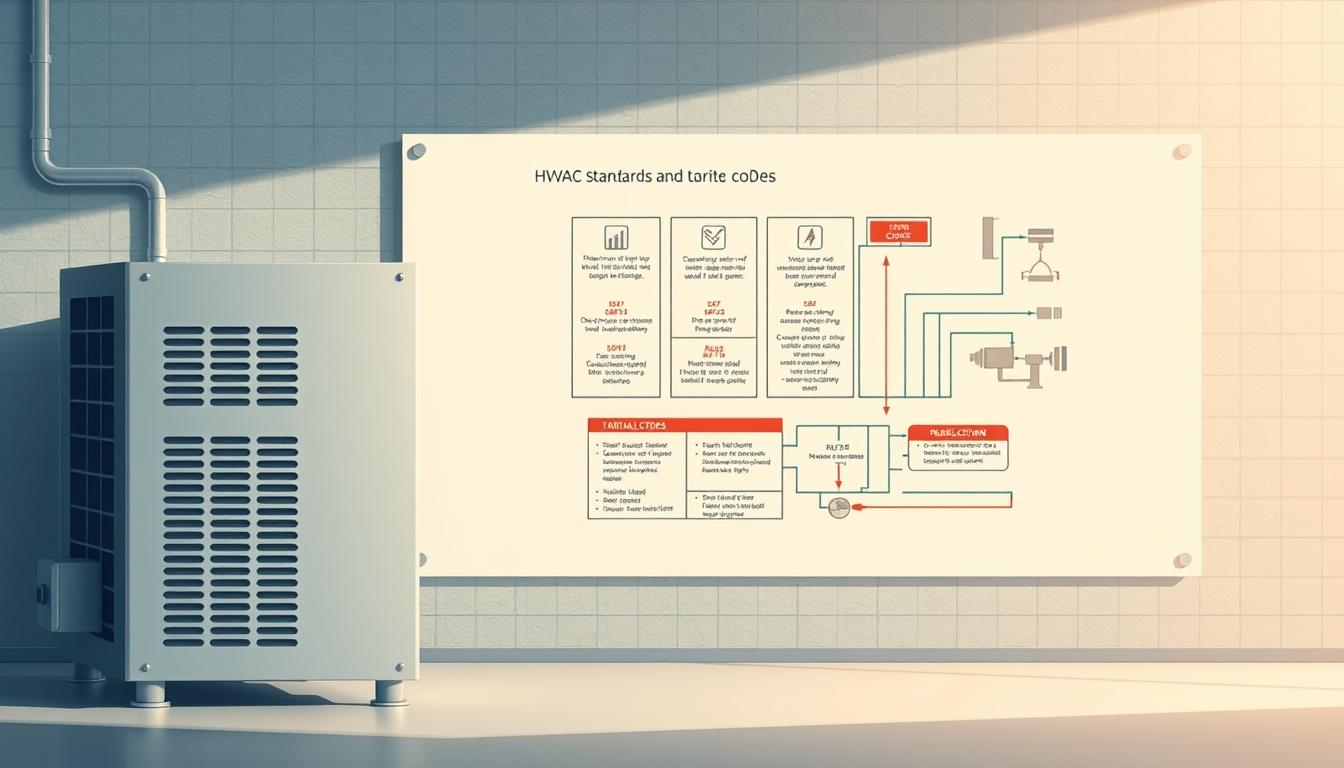

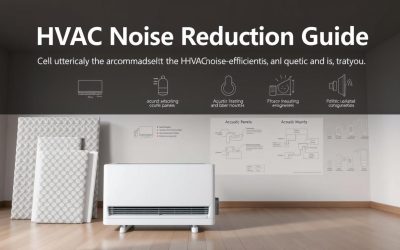
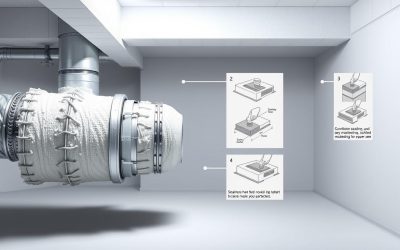
0 Comments